This month yields a bumper crop of new books about history’s women artists from the Renaissance to the twentieth century. We list those that have come to our attention, quoting the publisher’s description. If you know of other titles that should be on this list, please let us know by comment or by email (Erika@artherstory.net).
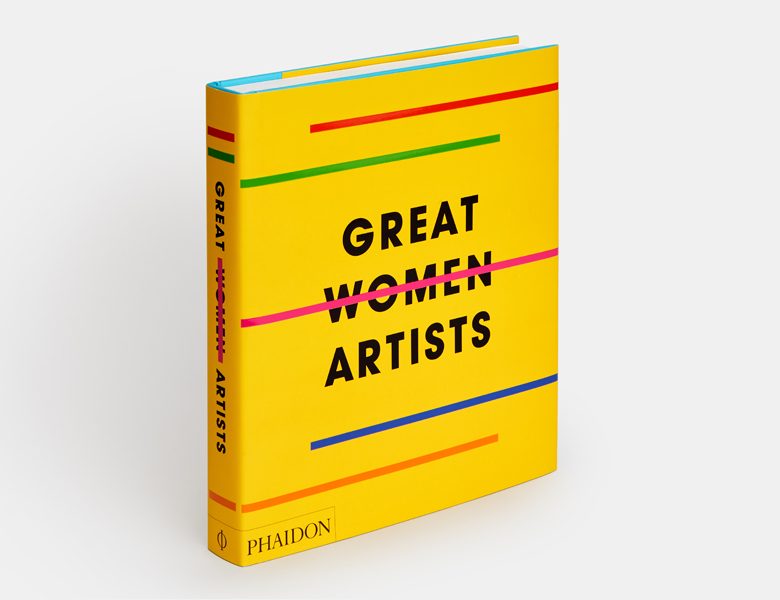
- Great
WomenArtists, introductory essay by Rebecca Morrill; multiple contributors. Publisher: Phaidon (ships from Sept. 25, 2019)
“Five centuries of fascinating female creativity presented in more than 400 compelling artworks and one comprehensive volume. The most extensive fully illustrated book of women artists ever published, Great Women Artists reflects an era where art made by women is more prominent than ever. In museums, galleries, and the art market, previously overlooked female artists, past and present, are now gaining recognition and value. Featuring more than 400 artists from more than 50 countries and spanning 500 years of creativity, each artist is represented here by a key artwork and short text. This essential volume reveals a parallel yet equally engaging history of art for an age that champions a greater diversity of voices.”

2. The Trouble with Women Artists: Reframing the History of Art, by Camille Viéville and Laure Adler. Publisher: Flammarion (distributed in North America by Rizzoli)
“Sixty-seven female artists and their work from the sixteenth century to the present demonstrate the evolution of art through a female-empowered lens. This book draws the portraits of sixty-seven fascinating women and their significant artistic achievements, from groundbreaking Renaissance painter Artemisia Gentileschi to the photography of Nan Goldin today. Tracing the painters, sculptors, photographers, and performance artists who shaped modern art, readers discover key figures and their signature works, including Mary Cassatt, Sonia Delaunay, Georgia O’Keeffe, Tamara de Lempicka, Frida Kahlo, Dorothea Tanning, Leonora Carrington, Yoko Ono, Eva Hesse, Marina Abramović, Carrie Mae Weems, and Cindy Sherman.”
Visit this link to read Charlotte Gordon’s Washington Post review of The Trouble with Women Artists.
Another recent notable survey of women artists, for young readers, is The Bigger Picture: Women Who Changed the Art World, by Sophia Bennett, illustrated by Manjit Thapp. The publisher is Tate Publications (March 2019).

3. My Dearest Heart: The Artist Mary Beale, 1633–1699, by Penelope Hunting. Publisher: Unicorn Publishing Group (available in North America from the University of Chicago Press, as of Oct. 2019)
“Mary Beale (1633–1699) was one of the earliest professional women artists in Britain. Her successful career was documented by her husband, Charles, whose almanacks provide a unique record of Mary’s patrons, painting technique and family affairs. Her portraits of politicians, clergy, aristocracy and intellectuals reflect the vibrant literary, scientific and political scene of the seventeenth century. She has been seen as a feminist icon not only as a professional artist but also as a poet and the author of a ‘Discourse on Friendship’ (1667) which argued for the equality of husband and wife in marriage—a radical concept at that time.”

4. I Know What I Am: The Life and Times of Artemisia Gentileschi, by Gina Siciliano. Publisher: Fantagraphics
“The true life story of a pioneering female painter. Michelangelo, Velázquez, Rubens, Rembrandt—all larger-than-life Renaissance figures celebrated for their mastery of their art. But often overlooked in this pantheon of Old Masters is Artemisia Gentileschi—Italy’s greatest female painter. In her debut graphic novel, Gina Siciliano brings to life the tumultuous seventeenth-century cities of Rome, Florence, Naples, and Venice where the fearless Gentileschi braved the male-dominated sphere of painting to become a groundbreaking artist. I Know What I Am paints a complex, feminist portrait of Artemisia as a single mother, a sexual assault survivor, and a pioneering practitioner of her craft.”
Read reviews of I Know What I Am in Publishers Weekly, Booklist and Book Marks Reviews.
See also Artemisia, written by Nathalie Ferlut, illustrated by Tamia Baudouin (Delcourt, 2017). Beehive Books has initiated a Kickstarter campaign to translate this work into English, from French.

5. Forever Seeing New Beauties: The Forgotten Impressionist Mary Rogers Williams, 1852–1807, by Eve M. Kahn. Publisher: Wesleyan University Press.
Revolutionary artist Mary Rogers Williams (1857—1907), a baker’s daughter from Hartford, Connecticut, biked and hiked from the Arctic Circle to Naples, exhibited from Paris to Indianapolis, trained at the Art Students League, chafed against art world rules that favored men, wrote thousands of pages about her travels and work, taught at Smith College for nearly two decades, but sadly ended up almost totally obscure. The book reproduces her unpublished artworks that capture pensive gowned women, Norwegian slopes reflected in icy waters, saw-tooth rooflines on French chateaus, and incense hazes in Italian chapels, and it offers a vivid portrayal of an adventurer, defying her era’s expectations.

6. Women in Art: 50 Fearless Creatives Who Inspired the World, by Rachel Ignotofsky. Publisher: Penguin Random House.
A charmingly illustrated and inspiring book, Women in Art highlights the achievements and stories of 50 notable women in the arts–from well-known figures like painters Frida Kahlo and Georgia O’Keefe, to lesser-known names like 19th-century African American quilter Harriet Powers and Hopi-Tewa ceramic artist Nampeyo. Covering a wide array of artistic mediums, this fascinating collection also contains infographics about artistic movements throughout history, statistics about women’s representation in museums, and notable works by women. Women in Art celebrates the success of the bold female creators who inspired the world and paved the way for the next generation of artists.
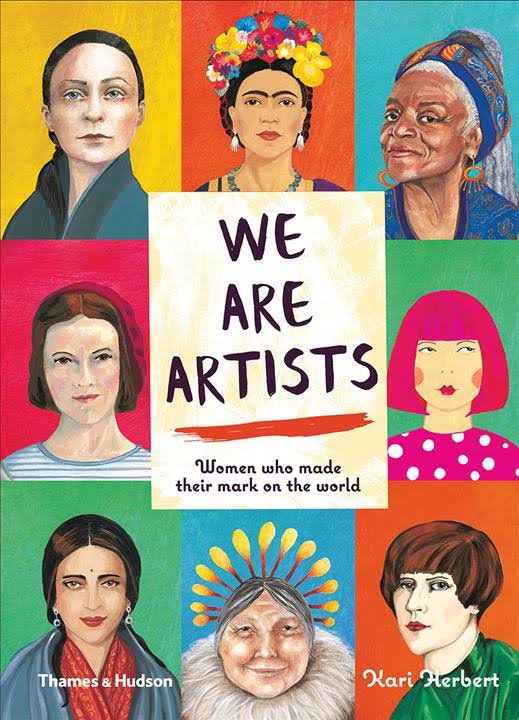
7. We are Artists: Women who Made their Mark on the World, by Kari Herbert. Publisher: Thames & Hudson.
A richly illustrated book, We Are Artists celebrates the life and work of fifteen female artists from around the globe and the distinctive mark they made on art. Presented as a collection of exciting biographical stories, each section reveals how the artist’s unique approach and perspective provided art and society with a new way of seeing things. The book places the spotlight on women painters, sculptors, printmakers, illustrators, designers, and craftswomen who created monumental artwork, often against daunting odds. The book includes reproductions of modern and contemporary artwork by Frida Kahlo, Yayoi Kusama, Georgia O’Keeffe, Alma Thomas, and Kenojuak Ashevak, to name a few. Through their personal stories, readers will learn about the art movements each artist worked in and the influence they exerted on both the art world and society as a whole.
We are Artists has been reviewed in Publishers Weekly and Booklist.
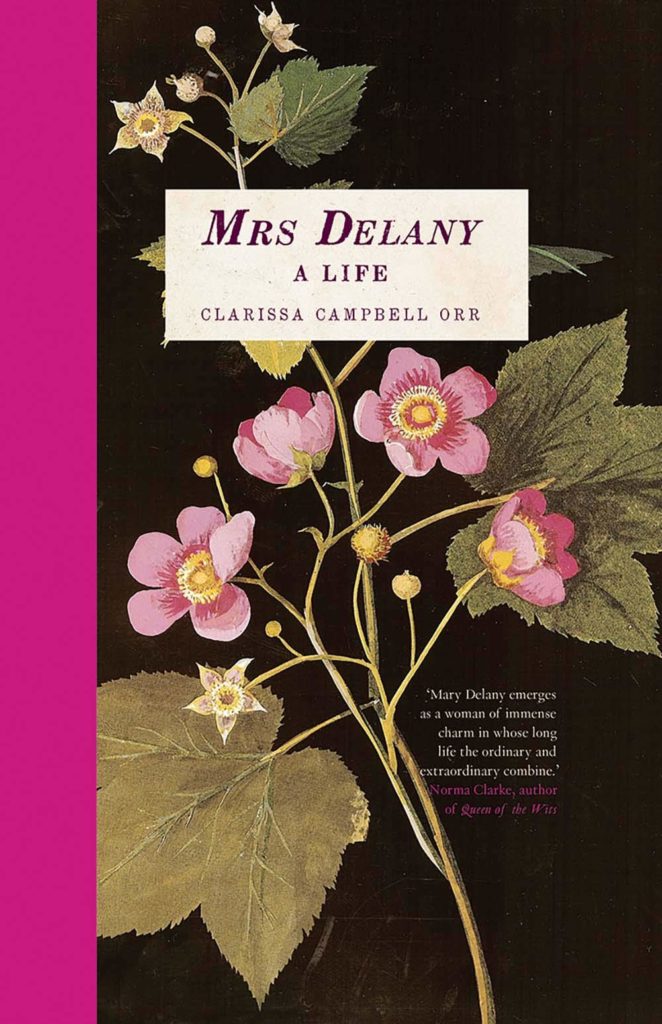
8. Mrs Delany: A Life, by Clarissa Campbell Orr. Publisher: Yale University Press.
This nuanced, deeply researched biography pulls back the lens to place Mary Delany’s art in the broader context of her family life, relationships with royalty, and her endeavor to live as an independent woman. Clarissa Campbell Orr, a noted authority on the eighteenth-century court, charts Mary Delany’s development from a young woman at the heart of elite circles to beloved godmother and celebrated collagist. Orr traces the varied connections Mary Delany fostered throughout her life and which influenced her intellectual and artistic development. Mrs Delany reveals its subject to be far more than a widow befriended by George III and Queen Charlotte; she is, instead, restored to her proper place in the era’s aristocratic society—and as a ground-breaking artist.
Reviews for Mrs Delany have appeared in The Guardian, The Daily Mail, Literary Review, and Women’s History Association of Ireland.
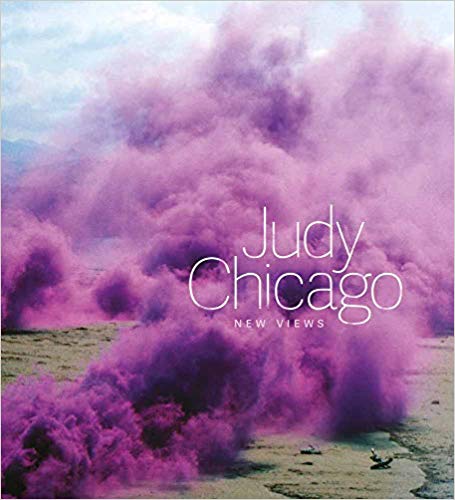
9. Judy Chicago: New Views, by multiple authors. Publisher: Scala Arts in association with the National Museum of Women in the Arts.
Contributing authors: Judy Chicago, Susan Fisher Sterling, Sarah Thornton, Hans Ulrich Obrist, Chad Alligood, Manuela Ammer, Massimiliano Gioni, Philipp Kaiser, Jonathan D. Katz, Martha C. Nussbaum, William J. Simmons. As the first major monograph on the feminist artist Judy Chicago in nineteen years, this fully illustrated volume provides fresh perspectives by leading scholars. Many people know her famed The Dinner Party, installed as the centrepiece of the Sackler Centre for Feminist Art at the Brooklyn Museum, but few know her other prescient bodies of work – on sex, birth, death, violence, the natural world and more. Featuring her newest work, The End, as well as major examples from throughout her career, this fascinating, elegantly designed book offers a new examination of Chicago’s wide-ranging artistic expression and powerful voice. The book is published on the occasion of the artist’s eightieth birthday and an exhibition of new work at the National Museum of Women in the Arts, as well as the announcement of the Judy Chicago online portal.
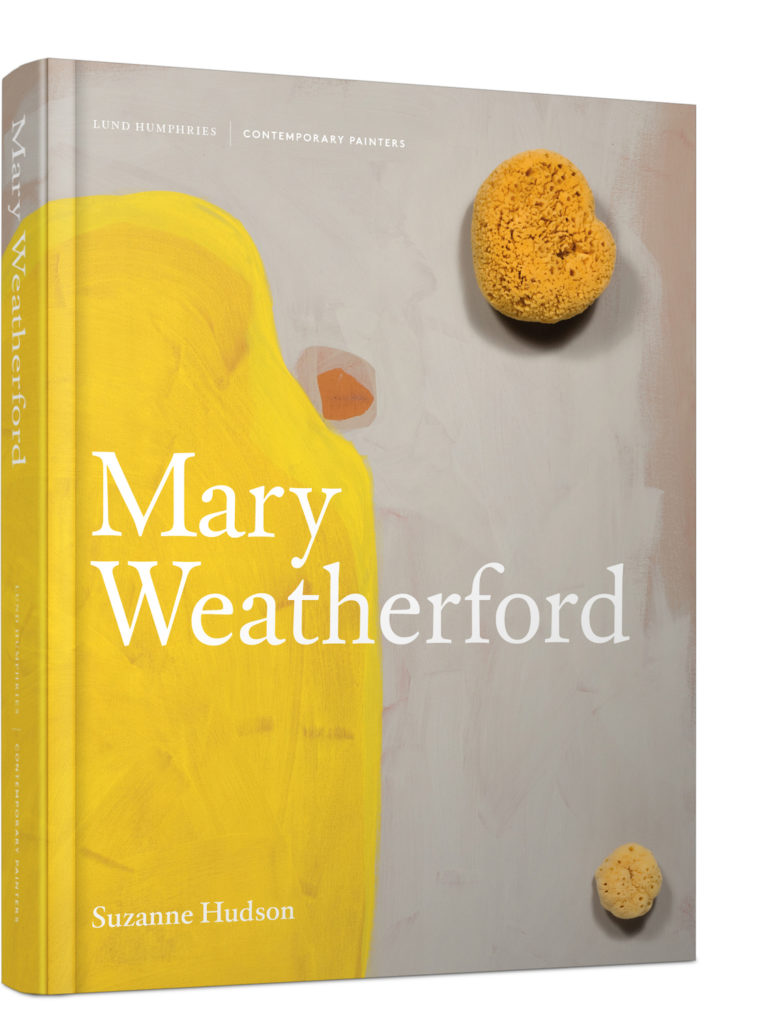
10. Mary Weatherford, by Suzanne Hudson. Publisher: Lund Humphries.
This is the first monograph to offer a comprehensive account of the work of Californian artist Mary Weatherford (b.1963), beginning in the mid-1980s and extending to the present. Her broadly literate and visually arresting paintings address the legacies of American modernists from Arthur Dove and Agnes Pelton to Willem de Kooning and Morris Louis, while grappling with the politics of gender, the representation of specific moods and experiences, and other concerns squarely rooted in the present moment. Suzanne Hudson’s text, the fruit of many studio visits and long interviews, reveals a singularly inventive artist whose boundless facility for reinvention will compel any viewer, student or critic of painting.
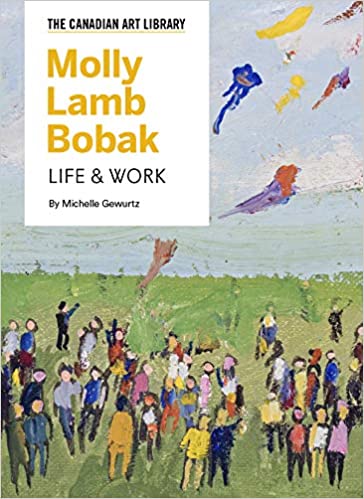
11. Molly Lamb Bobak, by Michelle Gewurtz. Publisher: Canada Art Institute.
Vancouver-born artist Molly Lamb Bobak (1920–2014) was the first Canadian woman war artist. The daughter of celebrated photographer Harold Mortimer-Lamb, Bobak longed to be a painter like her family friend the Group of Seven’s A.Y. Jackson. In 1942 Bobak joined the Canadian Women’s Army Corps and was sent overseas to London where she depicted female military training as well as dynamic scenes of marches and parades—subject matter for which she would later be well known.
Upon her return from the U.K., Bobak married fellow war artist Bruno Bobak. In 1960 their family moved to Fredericton, New Brunswick, where they lived and worked for over half a century. In one of the first generations of Canadian women who earned their livings as artists, Bobak became known for her paintings, drawings, and watercolours. For her role in the Second World War and many other accomplishments she was elected to the Royal Canadian Academy of Arts in 1973 and presented with the Order of Canada in 1995.
Molly Lamb Bobak: Life & Work traces the career of this pioneering Canadian and the diverse range of her artistic output, from her still lifes and interiors to her crowd scenes and self-portraits. Illuminating the unique way in which she challenged the constraints of gender bias through her work, the book explores Bobak’s legacy as an artist and educator.
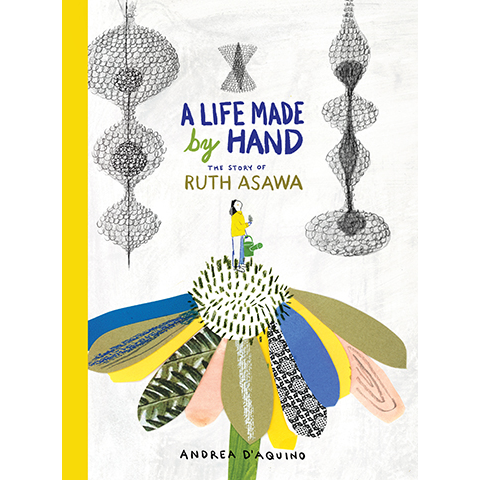
12. A Life Made by Hand: The Story of Ruth Asawa, by Andrea D’Aquino. Publisher: Princeton Architectural Press.
Ruth Asawa (1926–2013) was an influential and award-winning sculptor, a beloved figure in the Bay Area art world, and a devoted activist who advocated tirelessly for arts education. This lushly illustrated book by collage artist Andrea D’Aquino brings Asawa’s creative journey to life, detailing the influence of her childhood in a farming family, and her education at Black Mountain College where she pursued an experimental course of education with leading avant-garde artists and thinkers such as Anni and Josef Albers, Buckminster Fuller, Merce Cunningham, and Robert Rauschenberg. Delightful and substantial, this engaging title for young art lovers includes a page of teaching tools for parents and educators. For young art lovers.
The next five books in this list are the inaugural volumes in the Modern Women Artists series, published by Eiderdown Books. Eiderdown is a new press; it publishes books about female artists, written by leading female writers, art historians and cultural commentators.
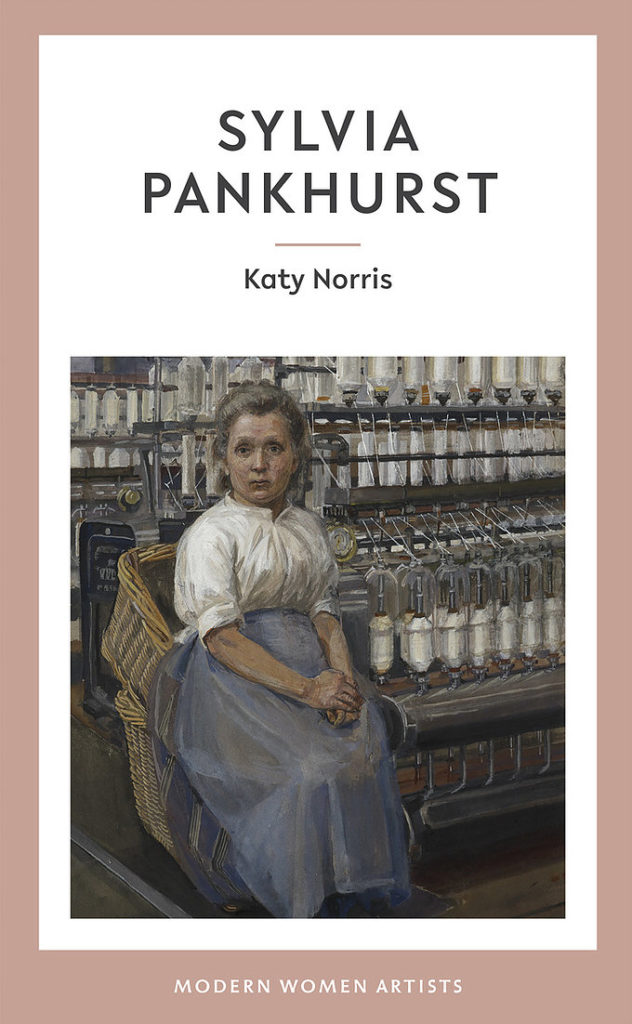
13. Sylvia Pankhurst, by Katy Norris.
“The daughter of Emmeline Pankhurst (who would become one of the most recognised names in the British women’s suffrage movement), Sylvia Pankhurst was raised in a socialist household and sought to lead a creative life. Through her striking portraits of women at work in the factories, as well as her designs for badges, banners, murals and even tea -sets, her artistic endeavours furthered the argument for universal equal rights. Altogether, Pankhurst’s work created a visual culture for the modern women’s movement and her artistic output is only now being re-evaluated as a critical part of understanding British social history.”
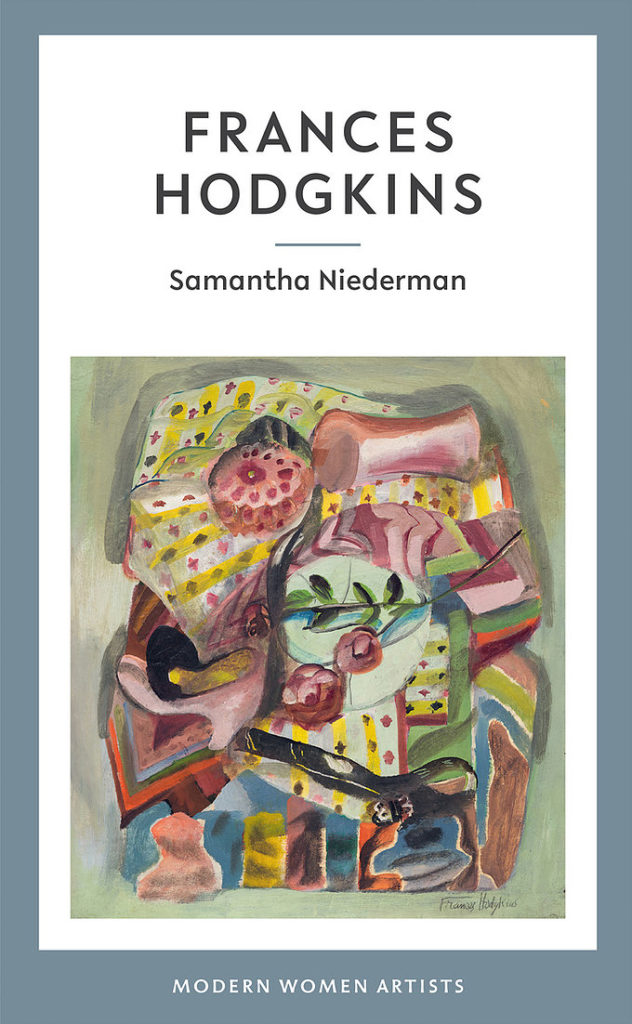
14. Frances Hodgkins, by Samantha Niederman.
“Frances Hodgkins (1869–1947) was a painter of landscapes and still lifes, and was a leading figure in the British avant-garde movement of Modernism.
Originally from New Zealand, it was in Europe, and later Britain, that Hodgkins would develop her recognisable style and palette, moving away from Impressionism to embrace the colours and techniques of Modernism. A brief period of textile design would consolidate the inclusion of pattern in her later work. She was revered for her unique contribution to Modernism, merging the genres of still life and landscape.
Hodgkins’ work influenced a generation of British artists, the impact of which can still be seen today. Examples of her work can be found in the national collections of museums and galleries around the world, including Museum of New Zealand Te Papa Tongarewa, the National Gallery of Canada and Tate, London.”

15. Marlow Moss, by Lucy Howarth.
“Marlow Moss (1889–1958) was a British Constructivist artist and a central figure in the development of European non-figurative art. Moss’s importance to the history of modern art is arguably equal to that of her contemporary and friend Piet Mondrian, and yet her name has been relegated to obscurity. A pupil of Ferdinand Léger in Paris and one of the few women within the circle of influential artists in Paris in the late 1920s, Moss’s grid-like paintings, geometric sculptures and abstract reliefs sought to create a universal language of colour and form. Today Moss’s work is beginning to be re-examined as a new generation of artists and art historians consider her contribution to modern art. Examples of this important artist’s work can be found in museums across Europe including at the Hague, and Tate, London.”

16. Laura Knight, by Alice Strickland
“Laura Knight (1877–1970) was an English Realist painter who documented life and culture in Britain during the first half of the twentieth century. Educated at a time when studying life-drawing was the preserve of male artists, Knight railed against social restrictions of the day and established her own life studio. She was a consummate documentarist and her studies of the ballet as well as her government-commissioned depictions of women’s wartime labour during the First World War are some of the this artist’s most enduring works. The first female artist to be elected a full Royal Academician, and with a career that spanned seven decades, Knight was one of the most important artists of her day. Today her work features in public collections across the UK and around the world, including Tate, the National Portrait Gallery and the Imperial War Museums, London.”
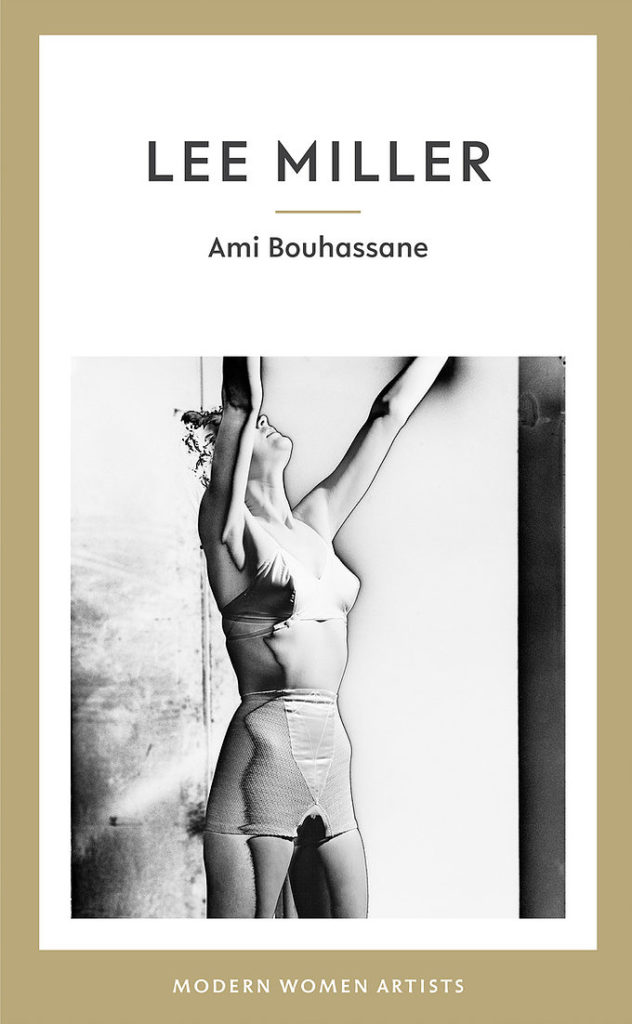
17. Lee Miller, by Ami Bouhassane.
“Lee Miller (1907–1977) was a fashion model, a photo-journalist and an artist who captured extraordinary moments of modern life.
As model and muse, Miller is too often only considered through the lens of the men she knew and loved. Yet she was an artist who forged her own path and who built a career which overturned expected social stereotypes. Her photography explored in her own unique way the objectification of the female form, and later documented the experience of women during the Second World War.
A contemporary of the British Surrealists, Miller’s contribution to the group is explored in this introduction to her work, as is her involvement in the development of the photographic technique of solorisation, previously solely attributed to Man Ray. Capturing some of the most enduring images of the early twentieth century, Miller’s work offers a record for our times.”
Lee Miller also features in a recent work of historical fiction: The Age of Light, by Whitney Scharer (Little Brown, February 2019). Visit this link to read Lauren Elkin’s New York Times review of the novel.
Other posts on new books about women artists
New Books About History’s Women Artists | Jan–March 2021
Art Herstory’s Women Artists Favorite Things, 2020 Edition
New Books about History’s Women Artists | Oct–Dec 2020
New Books About History’s Women Artists | July–Sept 2020
New Books About History’s Women Artists | Apr–Jun 2020
New Books About History’s Women Artists | Jan–Mar 2020
Ten Intriguing Books About Remarkable Women Artists, guest post by Carol M. Cram




Wow, this is incredible — and so glad to see an actual series on modern women artists — thank you Eiderdown! We could use something like that for early modern, too. Thank you Erica for compiling and sharing the publication info!!
Hi Julia,
Thank you so much for your comment about our new series! It was definitely time for a collection on Modern Women Artists! If you do read any of the series, we’d love to hear your thoughts. ❤️